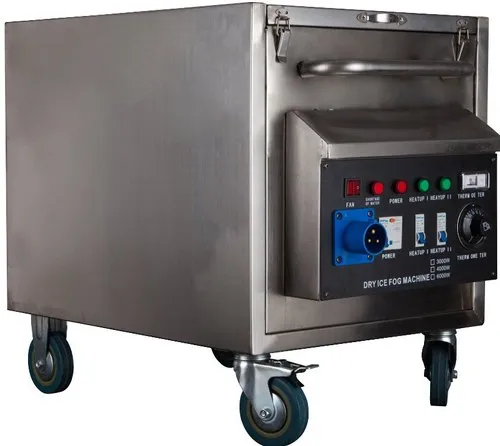Dry ice, the solid form of carbon dioxide (CO2), is commonly used in various industries for cooling and freezing purposes due to its extremely low temperature of -78.5°C (-109.3°F). The production of dry ice involves a specialized machine known as a dry ice machine or dry ice maker. Let's explore how these machines work and the different types available.
How a Dry Ice Machine Works
A dry ice machine operates by compressing and cooling gaseous carbon dioxide (CO2) to transform it into a solid state. Here's a step-by-step overview of the process:
- Compression: CO2 gas is compressed to high pressures, typically between 870 to 1,200 pounds per square inch (psi). This high-pressure CO2 is usually stored in specialized tanks.
- Expansion: The compressed CO2 is then released through an expansion valve. As the pressure drops, the gas rapidly cools and partially converts into a solid form (dry ice snow) and some cold CO2 gas.
- Collection and Pressing: The dry ice snow is collected in a chamber where it is compacted using a hydraulic press or a mechanical press into the desired shape and size, such as pellets, blocks, or slices.
Types of Dry Ice Machines
There are several types of dry ice machines designed to meet different industrial needs:
- Pelletizers: These machines produce dry ice pellets, which are small cylindrical pieces commonly used for cooling and blasting applications. Pelletizers are capable of producing pellets in various diameters, typically ranging from 3mm to 16mm.
- Block Presses: Block presses are used to form large blocks of dry ice. These blocks are often used for large-scale cooling, shipping perishable goods, and in special effects for the entertainment industry.
- Slice Makers: Slice makers produce thin slices of dry ice, which are ideal for applications requiring smaller, easily manipulable pieces, such as in the food and beverage industry for cooling displays or in laboratories.
- Automatic Dry Ice Makers: These machines are designed for continuous production of dry ice, incorporating features like automatic feeding and compacting systems to enhance efficiency and output.





Comments